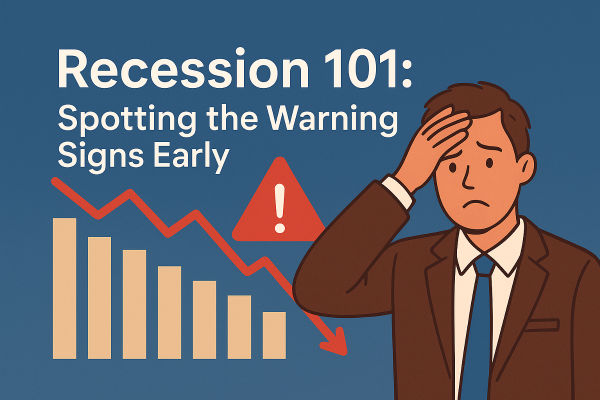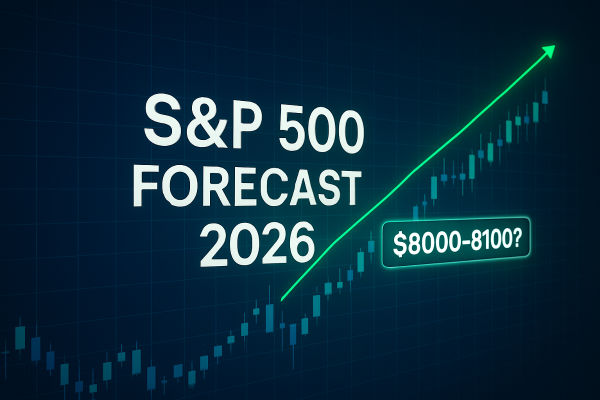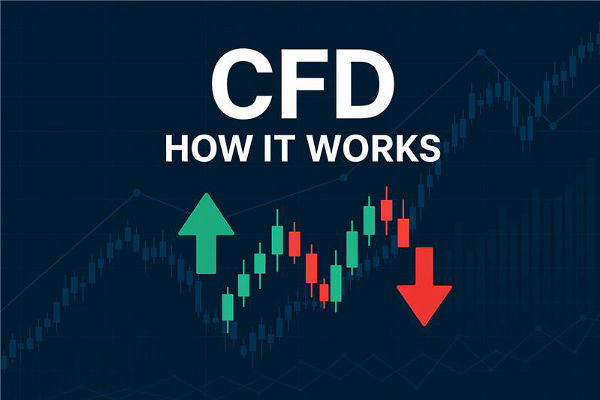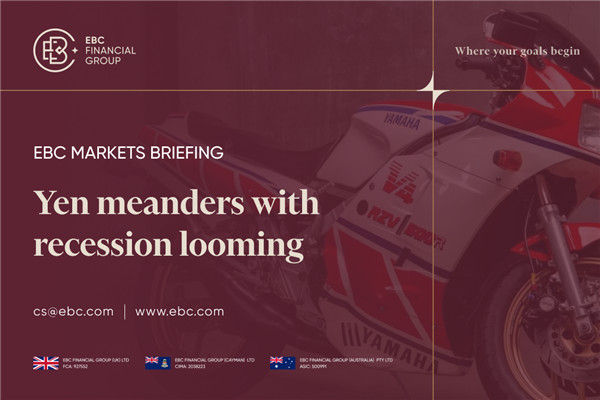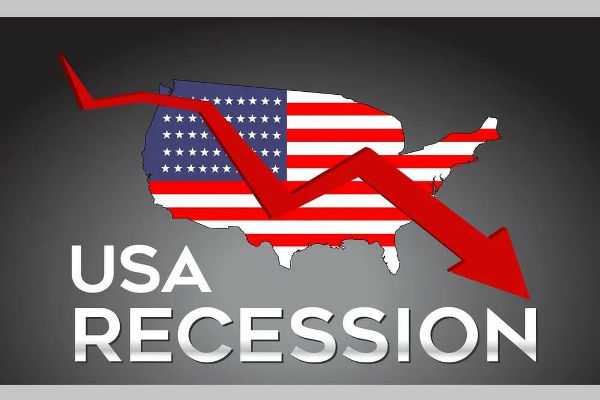Financial markets often move like weather patterns. Periods of steady growth can suddenly give way to dark clouds of uncertainty. Recessions are those economic storms that test how strong businesses, investors, and households truly are.
Understanding what a recession is goes beyond fear; it is about foresight. Recognising the early indicators such as rising unemployment, slowing output, or falling consumer confidence helps investors prepare instead of panic. In 2025, as global economies juggle high interest rates, tighter credit, and geopolitical pressure, spotting these early warning signs is an essential trading skill.
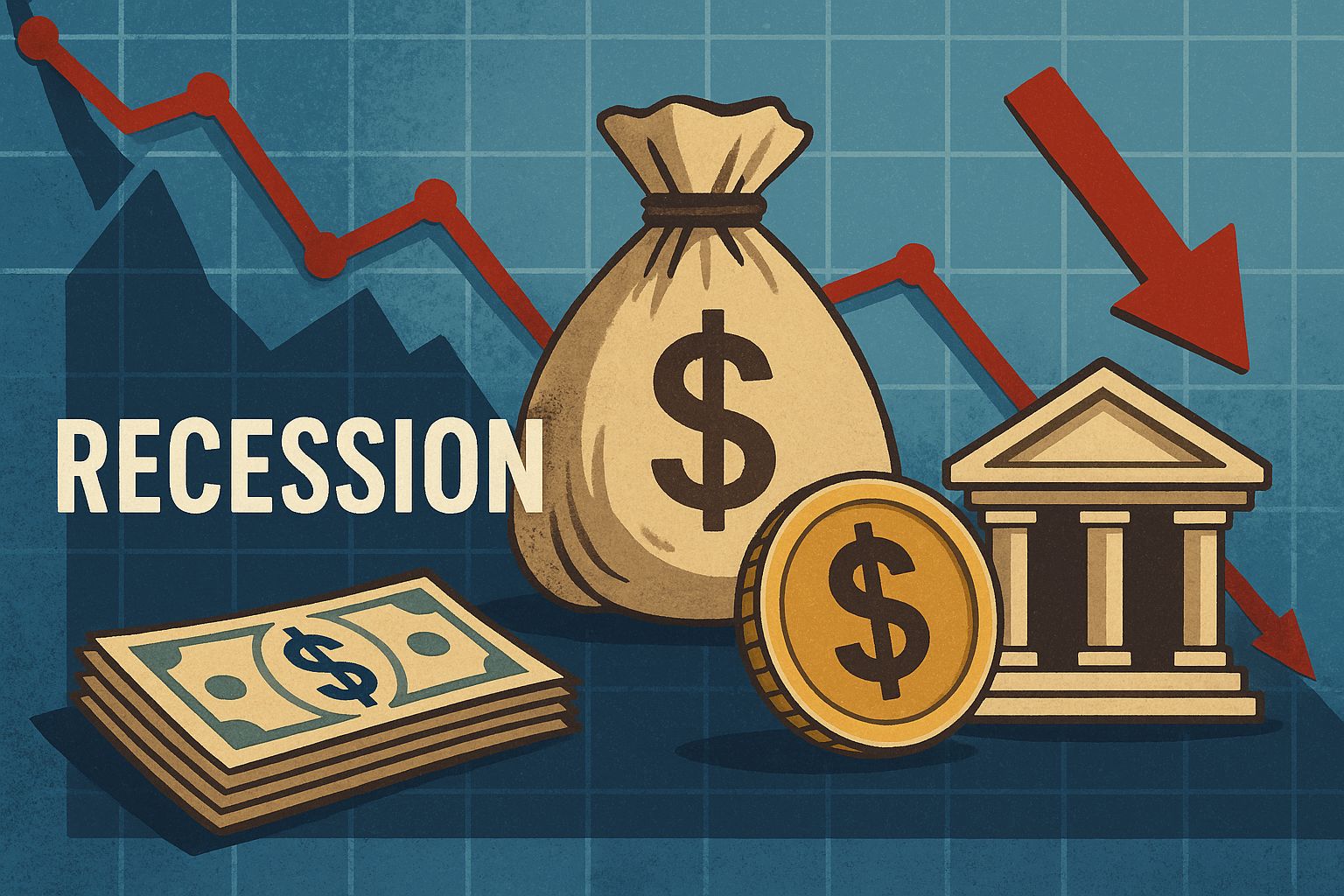
What Is a Recession?
A recession is a sustained period of economic decline, often defined by two consecutive quarters of falling Gross Domestic Product (GDP). GDP measures the total value of all goods and services produced in a country. When it shrinks, it signals reduced spending, weaker demand, and slower business activity.
However, economists look at more than just GDP. They also analyse employment rates, retail sales, industrial output, and income growth to confirm if the slowdown is broad and persistent. In the United States, the National Bureau of Economic Research (NBER) uses this multi-indicator approach to declare official recessions.
Recessions are a normal part of the economic cycle. After a period of expansion comes a slowdown, which eventually gives way to recovery. For traders, the goal is not to avoid recessions but to identify their arrival early and adjust strategies accordingly.
The Common Causes of Recession
Recessions rarely have a single cause. They emerge from a mix of financial, policy, and behavioural factors that interact across the economy.
Tight Monetary Policy: When central banks raise interest rates to control inflation, borrowing becomes more expensive. Businesses reduce investment and consumers cut spending, leading to slower growth.
Supply Shocks: Events such as oil price spikes, wars, or natural disasters can increase production costs and reduce output.
Asset Bubbles: When markets overvalue assets like property or technology stocks, sharp corrections can trigger financial instability.
Falling Consumer Confidence: When people fear job loss or inflation, they spend less, reducing demand across industries.
External Shocks: Trade wars, global conflicts, or pandemics can quickly disrupt supply chains and investment flows.
Each recession has its own story, but most share a pattern of tightening credit, falling profits, and weaker household spending.
Early Warning Signs of a Recession
Anticipating a recession means watching for leading indicators that often shift before official economic data does.
Inverted Yield Curve
This occurs when short-term government bond yields rise above long-term ones, signalling investor expectations of weaker growth ahead. Historically, every major US recession since the 1970s has been preceded by a yield curve inversion. In 2025, the US 2-year Treasury yield remained higher than the 10-year yield, reflecting persistent caution in financial markets.
Slowing Manufacturing Output
Surveys such as the Purchasing Managers’ Index (PMI) measure factory activity. A reading below 50 indicates contraction. In late 2024, European PMIs fell to around 47, suggesting a broad slowdown in industrial production.
Rising Unemployment
Employment data is a powerful recession signal. A steady rise in unemployment claims or job losses across industries often confirms that demand is weakening. The UK and Japan both reported small but noticeable increases in jobless rates in early 2025.
Falling Consumer Spending
Retail sales and household credit usage reveal how confident people feel about the future. When spending drops sharply, it often predicts slower GDP growth. In 2025, US retail sales declined for three straight months, raising concerns about consumer fatigue.
Tightening Credit Conditions
Banks often restrict lending when risk levels rise. Fewer loans mean fewer business expansions, which reduces overall economic activity. A global credit survey in March 2025 showed that 63 percent of banks tightened lending standards, the highest level in four years.
Real-World Examples of Past Recessions
The 2008 Global Financial Crisis
Sparked by excessive mortgage lending and the collapse of major financial institutions, this recession spread worldwide. It wiped out trillions in market value and led to massive government bailouts. Central banks responded with record-low interest rates and large-scale bond purchases.
The 2020 COVID-19 Recession
Triggered by global lockdowns, this was one of the fastest and deepest recessions in modern history. GDP across most major economies fell sharply within months. Recovery began only after governments launched stimulus packages and vaccines restored consumer confidence.
The 2023–2024 Global Slowdown
While not a full recession, economies such as Germany, Japan, and the UK experienced stagnant growth due to high energy prices and tighter monetary policies. The episode reminded investors that even mild slowdowns can reshape market sentiment and investment behaviour.
How Traders and Investors Respond
Recessions force market participants to shift focus from growth to protection. Defensive sectors such as healthcare, utilities, and consumer staples tend to perform better during downturns. Gold and government bonds often attract inflows as investors seek stability.
Equity traders may use short-selling strategies or focus on dividend-paying stocks with strong balance sheets. Meanwhile, long-term investors often see recessions as buying opportunities. Historically, the S&P 500 has delivered some of its best returns within a year after major recessions end, proving that patient strategies can outperform panic-driven ones.
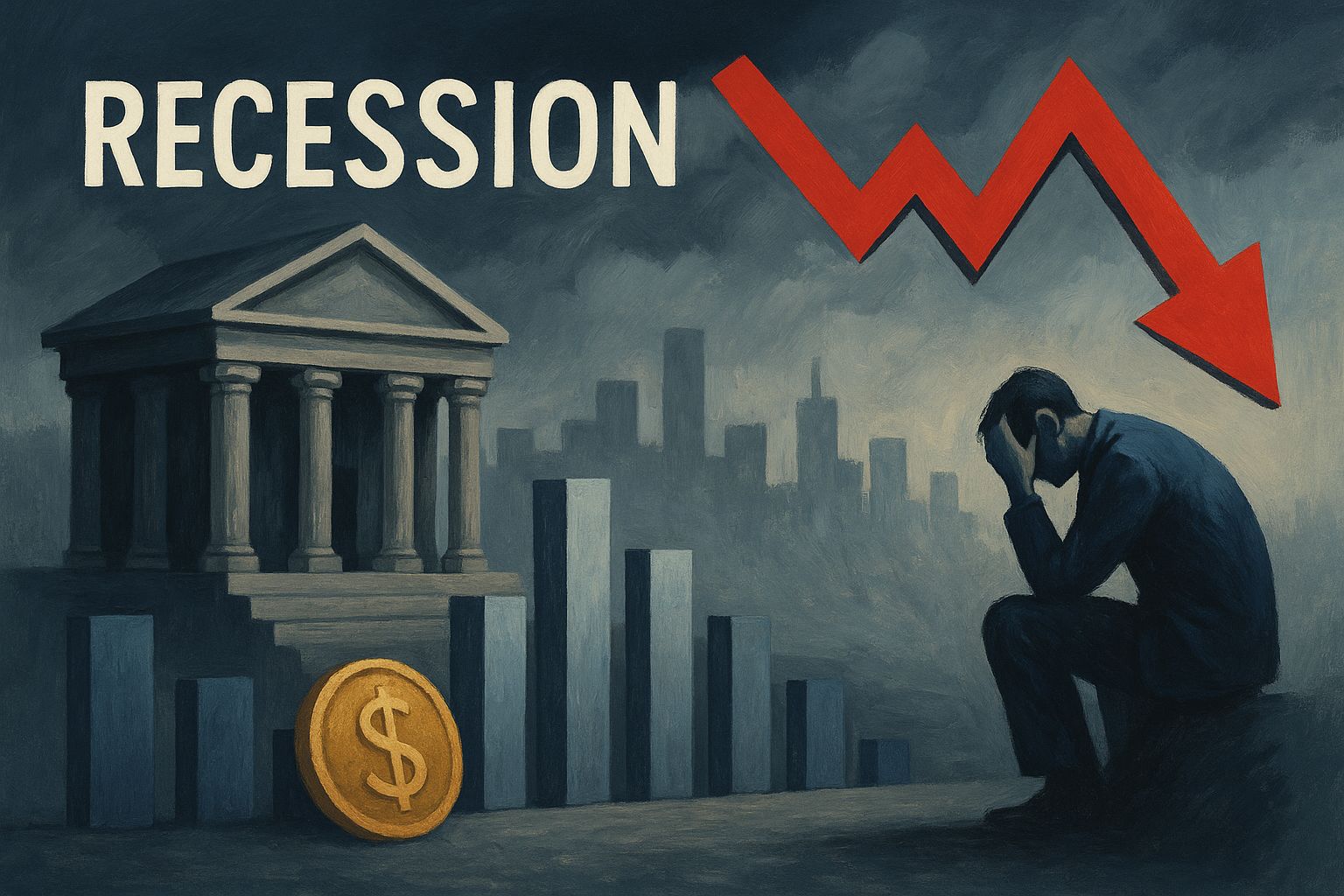
FAQs About Recession
Q1. How long does a recession usually last?
On average, most recessions last between six months and two years. However, recovery speed depends on the cause and how quickly policy support arrives.
Q2. Are all recessions global?
No. Some recessions affect only one country or region. Others, such as the 2008 financial crisis, spread across the world due to interconnected markets.
Q3. How can individuals prepare for a recession?
People can focus on reducing debt, building emergency savings, and investing cautiously in diversified portfolios that include defensive assets.
The Big Picture
Recessions are natural parts of the business cycle. They cleanse excesses, reset valuations, and prepare the foundation for future growth. For traders, understanding them is key to managing risk and identifying turning points.
The ability to spot the early warning signs of a recession allows investors to make informed decisions, whether that means hedging against losses or positioning for recovery. Learning to interpret economic data and market sentiment helps transform uncertainty into opportunity.
Mini Glossary
GDP (Gross Domestic Product): The total value of all goods and services produced within a country.
Yield Curve: A chart that shows interest rates on government bonds across different maturities.
PMI (Purchasing Managers’ Index): A survey-based indicator showing whether economic sectors are expanding or contracting.
Fiscal Policy: Government spending and taxation used to influence the economy.
Monetary Policy: Central bank actions that control money supply and interest rates.
Disclaimer: This material is for general information purposes only and is not intended as (and should not be considered to be) financial, investment or other advice on which reliance should be placed. No opinion given in the material constitutes a recommendation by EBC or the author that any particular investment, security, transaction or investment strategy is suitable for any specific person.
